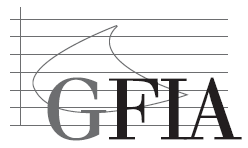By Peter Douglas of GFIA
I recently chaired a Bloomberg discussion, targeted at small or growing hedge funds, offering advice on what investors are looking for. My panellists all had at least 10 years’, and in one case 20 years’ experience in the hedge fund or institutional asset management industry, in senior positions. The previous panel had focussed on the nigh-impossibility of a small hedge fund morphing into a big hedge fund. Clearly that wasn’t what the audience wanted to hear, and hence we were determinedly upbeat and I think successful in outlining what managers might put in place to enable success. Hooray for us.
discussion, targeted at small or growing hedge funds, offering advice on what investors are looking for. My panellists all had at least 10 years’, and in one case 20 years’ experience in the hedge fund or institutional asset management industry, in senior positions. The previous panel had focussed on the nigh-impossibility of a small hedge fund morphing into a big hedge fund. Clearly that wasn’t what the audience wanted to hear, and hence we were determinedly upbeat and I think successful in outlining what managers might put in place to enable success. Hooray for us.
But the really interesting discussion was in the “green room” before the presentation, where the five of us were chatting amongst ourselves. There, the discussion was darker. We were commenting on the well-flagged trend of the hedge fund industry to be dominated by a small number of very large managers, offering institutional investors modest, but low–volatility, uncorrelated returns. So far, not controversial. But we then found ourselves all agreeing, easily and strongly, with the premise that, lurking within one of the behemoth funds of today, was another LTCM. Conceptually, it is not possible to deploy many billions of dollars in volatile and downwardly-correlated markets, and at the same time avoid volatility and correlation. Many different investment strategies, over the years, have tried to pull this off, and all, so far, have failed. Our older readers will recall 1987’s Black Monday, when “portfolio insurance”, designed to reduce the risk of institutional investment portfolios, actually had the effect of forcing markets down rapidly and violently. We now hear from larger hedge funds of their superlative risk systems, the sovereignty of risk management over trading, of the hundreds of millions of dollars spent on risk management software. To be blunt: yadda yadda yadda! You cannot take risk out of an investment return. For sure, you can move it somewhere else, maybe even somewhere less visible. But you can’t remove it.
And you can’t deploy vast amounts of capital (you should be thinking not of the proportion of total market capitalisation or issuance of securities at this point; you should be thinking about the proportion of turnover/trading) without there being de facto correlation. Correlation, too, doesn’t go away; assets correlate because of human behaviour, not because of assets’ intrinsic relationships. Copper doesn’t have any intrinsic relationship with the Chinese economy. It correlates because of the behaviour of Chinese economic actors, initially, and then because investors need an investable proxy for Chinese growth. Similarly we should not be surprised when disparate assets correlate on the downside in a crisis, as all investors are trying to take risk off simultaneously.
Systemic Risk Is Meaningful
Deutsche Bank estimate that the global hedge fund industry manages about US$2.7tn of capital; global equity market capitalisation is approximately US$55tn. Given that a typical hedge fund may turn over its capital several times a month, the marginal importance of the hedge fund industry to global capital markets is huge. The systemic risk is meaningful. Institutions have increased their allocations to hedge funds dramatically in recent years, although arguably that growth is slowing, peaking at U$1tn, according to Deutsche Bank, in 2007. Many believe that they have found an uncorrelated, low volatility, reasonably liquid strategy for their public market portfolios. One day – and perhaps one day soon – that belief will be tested.
For what it’s worth, our panel’s private conclusion was that the world’s multibillion-dollar hedge fund club is sitting on a time-bomb of tail-risk… somewhere.
About the author: GFIA offers non-discretionary advisory services for hedge fund and absolute return investors. GFIA focuses on managers with clear geographic and knowledge edges based in Asia, Latin America and frontier markets. GFIA is fully objective in offering non-conflicted research and advice to institutional clients.
GFIA offers a comprehensive range of services, driven by coverage and intensive analysis of skill-based absolute return funds since 1998:
• market intelligence and manager review of funds within GFIA’s universe
• due diligence and manager analysis • portfolio construction and non-discretionary management
• advisory services • wealth management services
For more information visit www.gfi a.com.sg or email gfia@gfia.com.sg
Related Articles:

This article doesn’t make much sense…larger hedge funds primarily trade very liquid markets (large cap equities, currencies, etc.) and provided they have an edge and manage risk well, they have opportunities to profit. In fact, some would argue they have better opportunities as they have the resources to hire the best people and buy/build the best systems.
This sounds like another article written by a small fund manager bashing the larger funds that take business from them all the time and saying how they “add extra alpha because they are nimble”. Sounds good in theory, in reality, small funds have much higher business/operational risk and much more limited resources. Even if they add a small slice of extra alpha (few do) the risks outweigh the additional potential reward.
I’ll stick with the top funds that continue to deliver top decile returns and leave the emerging manager game to those with money to burn, thank you very much!